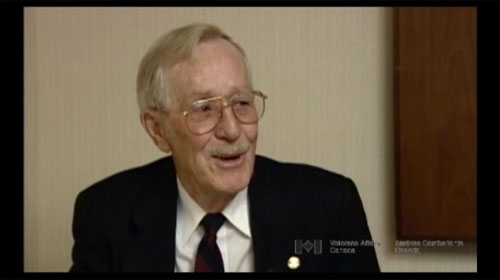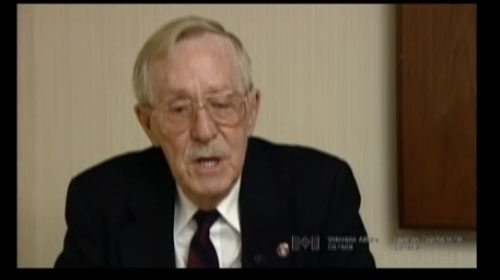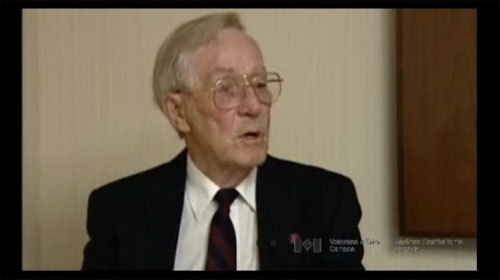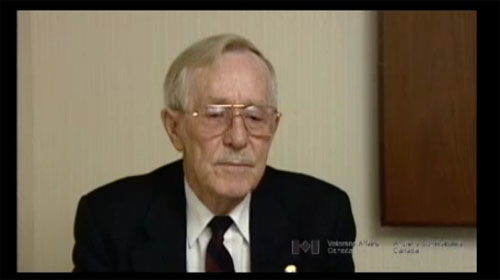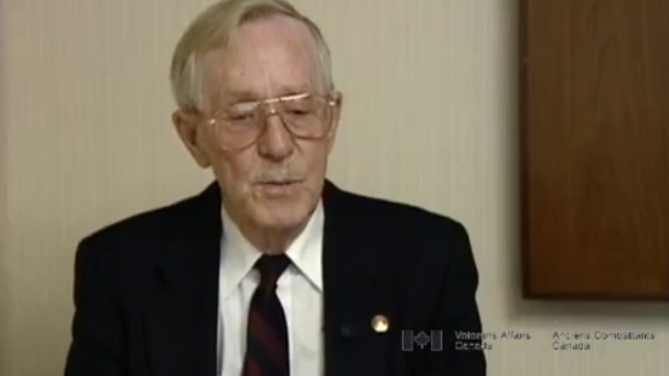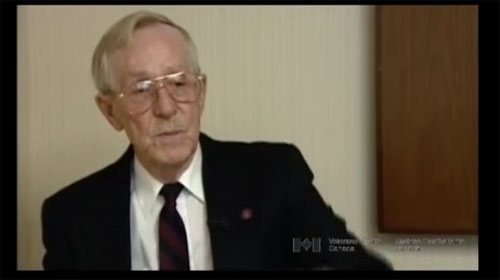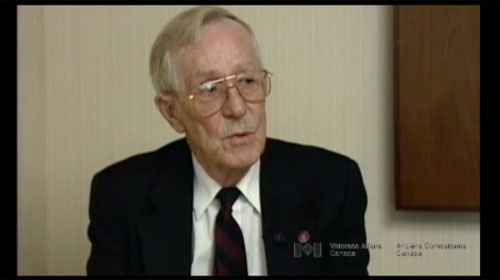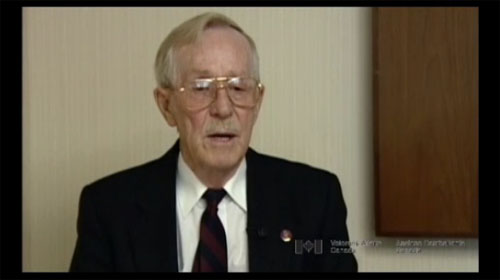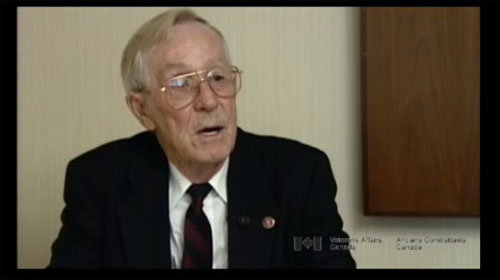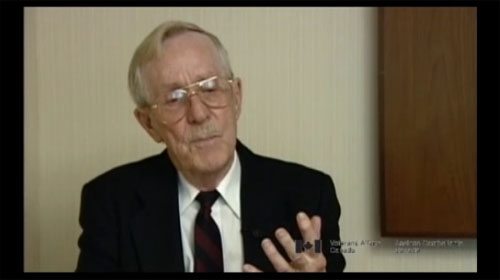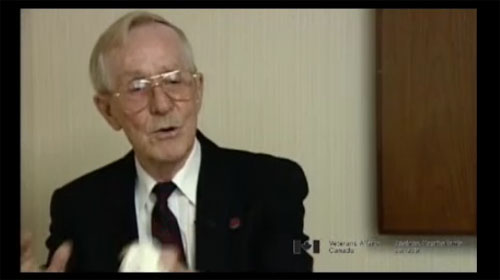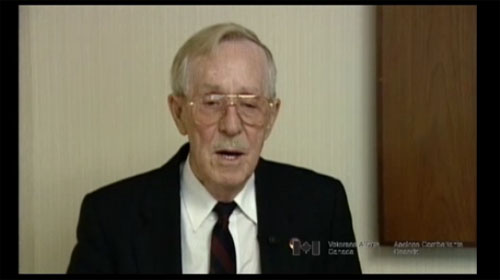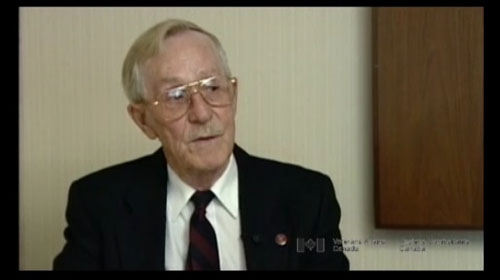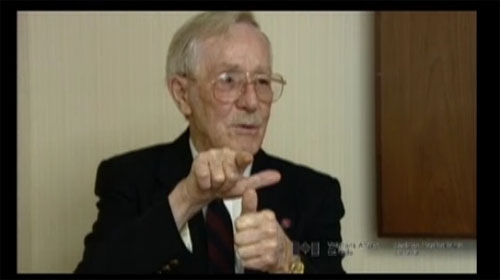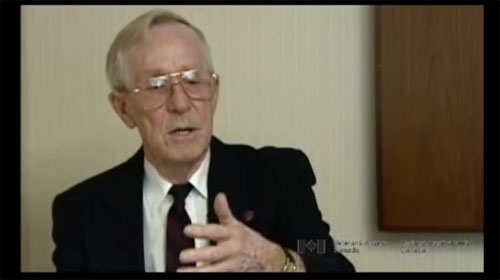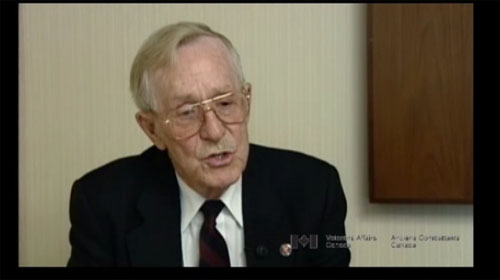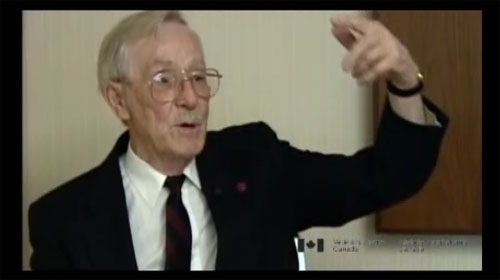The Road to Captivity
Heroes Remember
The Road to Captivity
Transcript
Description
Mr. Atkinson describes being marched to Stanley Gap by the Japanese. During the march, two men are pulled from the line, and are later tortured within earshot of the other prisoners. That night Mr. Atkinson has an unlikely reunion with his brother.
Harold Atkinson
Harold Atkinson was born on February 14, 1922 in Selkirk, Manitoba. He had three siblings. His father, a First World War Veteran, died when he was nine. His family lived on relief, seven dollars a week, and he helped by delivering papers. He finished grade nine, and then in 1940 enlisted. Mr. Atkinson was eighteen when he joined the Winnipeg Grenadiers. He served in Jamaica, guarding German and Italian nationals at an internment camp. He returned to Canada and then went to Hong Kong with his unit. Mr. Atkinson fought against and was taken prisoner by the Japanese. As a prisoner, he heard several comrades bayoneted to death. Mr. Atkinson worked at Kai Tak airport and in North Point Camp's diphtheria ward. In Omini, Japan he worked as a stevedore at the shipyard. When the war ended, Mr. Atkinson was fortunate enough to be flown home.
Meta Data
- Medium:
- Video
- Owner:
- Veterans Affairs Canada
- Duration:
- 2:10
- Person Interviewed:
- Harold Atkinson
- War, Conflict or Mission:
- Second World War
- Branch:
- Army
- Units/Ship:
- Winnipeg Grenadiers
- Rank:
- Private
- Occupation:
- Machine Gunner
Related Videos
- Date modified:



